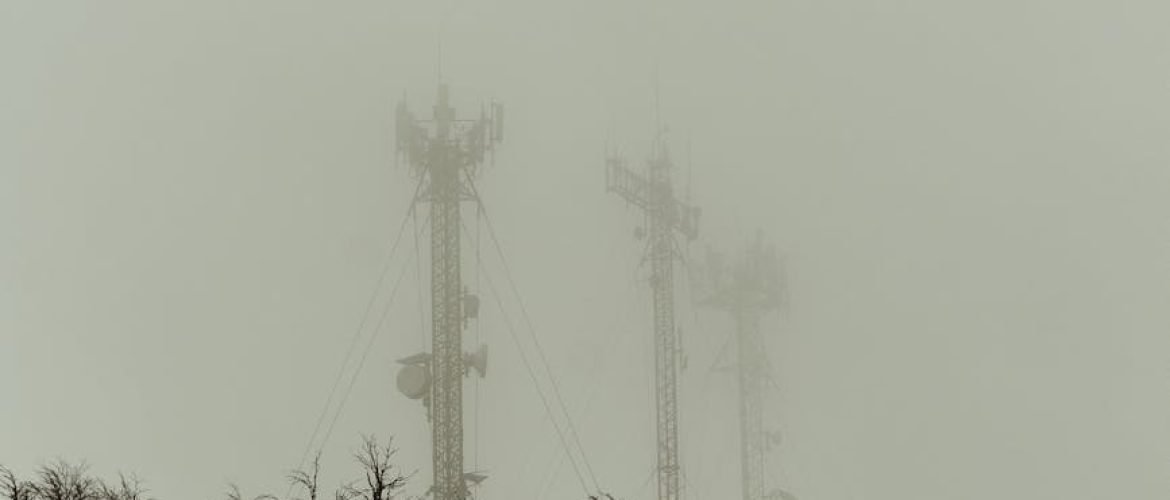Satellite Internet Technology
Satellite Connectivity Advantages
Satellite internet’s got a few tricks up its sleeve that make it a game-changer, especially for places where Wi-Fi signals aren’t exactly hitting home.
-
Global Reach: One of the coolest perks of satellite internet is its ability to reach far and wide, covering spots no other tech can touch. Unlike the hustle of laying down miles of cables for fibre or copper networks, satellites beam internet signals all over the map, hitting remote and rural nooks that are typically off-grid. No fancy groundwork needed. Just a satellite and you’re in business (Satellite Today).
-
Quick Setup: Getting communities online sooner rather than later is possible with satellites. Unlike waiting for the paint to dry with traditional network setups, satellite systems can be up and running before you know it. This is especially handy in emergencies or when time’s of the essence to get folks connected.
-
Tech Upgrades: High Throughput Satellite (HTS) technology is the flash behind speedy data rates and trimmed-down costs. HTS is a superhero in cutting down expenses and sparks the launch of boatloads of small businesses in places like Sub-Saharan Africa, flipping the economic growth switch and firing up job creation (Satellite Today).
| Feature | What’s the Deal? |
|---|---|
| Global Reach | Internet reaches everywhere, even those hard-to-get-to spots. |
| Quick Setup | Quick to get going compared to the snail’s pace of laying cable and fibre networks. |
| Tech Upgrades | Amped-up data speeds and reduced costs with HTS magic. |
For more on how this is turning traditional internet on its head, check out space-based internet systems.
Challenges to Overcome
Despite the benefits, satellite internet’s got a few bumps on the road to work through.
-
Lag Problems: Satellite connections can feel sluggish compared to fiber since signals zip all the way up into space and back down again. This delay can seriously slow down real-time chatter and mess with gaming and video calls (Ziply Fiber).
-
Weather Whammies: Bad weather like heavy rain or snow can cut the signal, turning your internet into a fair-weather friend. This makes satellite internet dicey in places where the forecast can be just as extreme.
-
Pricey Proposition: Getting satellites up in the sky and keeping them there ain’t cheap. Even with HTS trying to cut down on costs, you’re looking at a hefty upfront price tag. Plus, the business side needs some clever thinking to keep satellite internet within reach price-wise (Satellite Today).
-
Bandwidth Blues: Even with HTS tech bridging some gaps, satellite might struggle with big-data demands, so those who want to download whole seasons or giant files might find it lacking compared to hardwired alternatives.
| Hurdle | What You’re Up Against |
|---|---|
| Lag Problems | Delays that leave you on pause during real-time activities. |
| Weather Whammies | Unpredictable outages when Mother Nature throws a fit. |
| Pricey Proposition | Expensive start-up costs and the need for creative pricing strategies. |
| Bandwidth Blues | Challenge with heavy data lifting when compared to fibre or cable. |
These hurdles stress the importance of ongoing tweaks and tech updates to make satellite internet fast, reliable, and affordable. To see how they’re working these issues out, read about low-latency internet via space.
Satellite Broadband Expansion
Everyone’s hungry for internet and satellite broadband is stepping up to the plate. It’s especially keen to make itself useful in places where traditional internet can’t stretch its legs.
Target Areas for Satellite Players
Satellite folks are zooming their focus on areas where regular internet is as scarce as hen’s teeth. We’re talking about rural corners and far-flung places where stringing cables is as practical as flying a pig. Some African powerhouses like Nigeria, South Africa, Kenya, Angola, and Ghana, along with nations like Sudan and Egypt, are high on the list for this space-age internet boost. It’s a bit tricky in some of these places with loads of red tape and political twists, but they’re pushing forward all the same.
By honing in on these spots, satellite internet’s breaking barriers, beaming high-speed connections right into the heart of underserved areas. To catch more on this space revolution, take a gander at our page on space-based internet systems.
Role of Satellite Connectivity in Africa
In Africa’s expansive lands, satellite internet’s nothing short of a miracle worker. Many rural areas, miles away from coastal grid hubs, see satellite as their only lifeline to the web. It doesn’t just link them up; it thrusts them into the digital age, leveling the playing field a bit.
Internet across Africa is growing faster than a weed in spring, thanks partly to those undersea cables running from Asia and Europe. In the past year alone, satellites have been a game changer, especially in Eastern, Southern, Central, and Western bits of Africa.
| Region | How Connectivity Happens |
|---|---|
| Eastern Africa | Submarine cables and satellites |
| Southern Africa | Both undersea cables and satellites |
| Central Africa | Mostly satellites |
| Western Africa | A mix of cables and satellites |
If you’re curious about how satellites are joining forces for global connectivity, check out our insights on internet from space.
By sticking their necks out in these remote and wild reaches, satellite providers are shaking up the internet game. They’re not just bridging gaps; they’re rolling out the welcome mat to digital inclusion. For details on the fancy new ways satellite tech is reducing lag times, see our article on zippy internet via space.
Speed and Efficiency Comparison
Alrighty, so you’re wondering how satellite internet stacks up against the trusty old fibre option when it comes to speed and getting stuff done efficiently.
Fibre Internet vs Satellite Internet
Fibre internet’s kind of the Usain Bolt of connectivity—fast, reliable, and it doesn’t trip on its laces. Perfect for binge-watching, intense gaming, and those awkward video calls with the boss. Now, satellite internet, while not as zippy, delivers speeds from 25 to 200 Mbps, decent for scrolling through social media or catching up on the latest series, maybe just fewer screens at the same time (Ziply Fiber).
| Internet Type | Typical Speeds (Mbps) | Good for… |
|---|---|---|
| Fibre Internet | 100 – 1000 | Movies, Games, Slick Zoom Meetings |
| Satellite Internet | 25 – 200 | Web Browsing, Streaming a Few Shows |
Fibre gives you that rock-solid connection, cool as a cucumber when it comes to handling big data bursts. Much more dependable if you’re in a region where everyone’s online all the time (Ziply Fiber).
Impact of Latency and Reliability
Now, let’s chat about latency—the party pooper for real-time fun. Fibre’s got barely-there delays, ideal for when milliseconds matter, like in gaming or chatting with a friend across the pond. Satellite on the other hand, likes to take its time, since it’s got quite the journey to the satellite and back. This causes some noticeable delays during those epic multiplayer battles or urgent work calls (Ziply Fiber).
| Internet Type | Latency (ms) | Real-time Ruckus |
|---|---|---|
| Fibre Internet | < 20 | Smooth Gaming, Seamless Video Calls |
| Satellite Internet | 600 – 1200 | Lags in Games, Call Delays |
Satellite internet’s got a weak spot—bad weather can mess with its head, leading to patchy service. Contrasting that, fibre-optic, the steady Eddie, isn’t much bothered by whether it’s sunny or stormy (Ziply Fiber). But hold your horses, some cool space internet systems are popping up aiming to fix those hiccups.
If you’re looking for future-proof internet that can crank up the speed dial without breaking a sweat, fibre’s your go-to hero. However, satellite internet’s champing it out where cables dare not tread, bringing online magic to far-off places.
While satellite’s got some catching up to do with speed and consistency, pioneers in space network tech are hustling to bridge the gap. For heavy-duty, speed-reliant work, fibre still wins the trophy. Yet, satellite’s got its own story, keeping folks connected where fibre can’t, playing a key role in spreading online access everywhere.
Leading Satellite Internet Providers
Starlink’s Game-Changing Approach
Starlink, under SpaceX’s umbrella, is shaking up satellite internet. They’re on a mission to bring super-fast internet to the most unreachable spots on Earth. With over 5,000 satellites already cruising in low Earth orbit, Starlink’s not stopping there. They’re eyeing a constellation of 12,000 satellites by 2027 and might shoot for 30,000 later on (Space Impulse). This massive web of satellites means Starlink offers speedy and dependable internet, cutting down on the lag common with older satellite setups.
Starlink’s Top Perks:
- Blazing fast internet in far-flung places
- Less lag thanks to low Earth orbit satellites
- Expanding coverage through a growing satellite network
Starlink’s approach pushes forward the world of space internet networks.
Other Rising Stars
The satellite internet scene is buzzing, with a bunch of companies jumping in to compete with Starlink. Among the ones to watch are Amazon’s Project Kuiper and OneWeb, each planning to boost global internet connectivity from space.
Amazon’s Project Kuiper:
Set to send up its first satellites in 2024, aiming to wrap up its constellation by 2026 (EdTech Magazine). Kuiper’s goal? Deliver speedy, low-lag internet.
OneWeb:
Building a fleet of LEO satellites to serve places lacking adequate coverage, hoping to close the digital gap.
| Company | First Satellite Launch | Target Constellation Size | Goal |
|---|---|---|---|
| Starlink (SpaceX) | Up and running | 12,000 – 30,000 | Speedy, low-lag internet in hard-to-reach places |
| Project Kuiper (Amazon) | 2024 | TBD by 2026 | Smooth, low-lag internet |
| OneWeb | Operational | 648 – expandable | Connectivity for underserved spots |
The global satellite internet market, worth $8.2 billion in 2022 (EdTech Magazine), shows just how crucial this tech is becoming. With LEO satellites possibly hitting 90,000 in the next decade, expect even fiercer competition and better internet access globally.
Picking the right satellite internet provider means you get to enjoy low-latency internet through the stars and stay connected no matter where you are. To learn all about space-based internet, check out our section on space-based internet systems.




